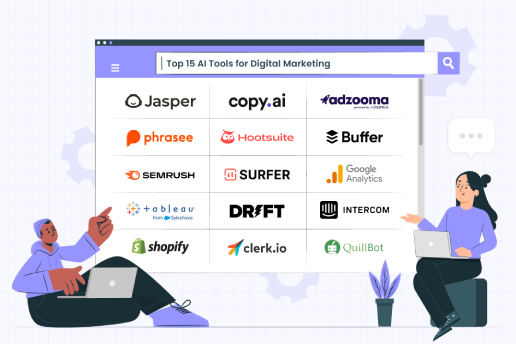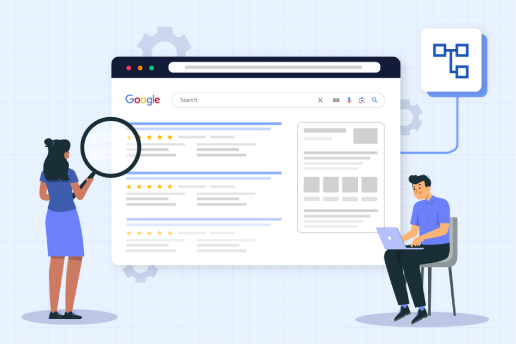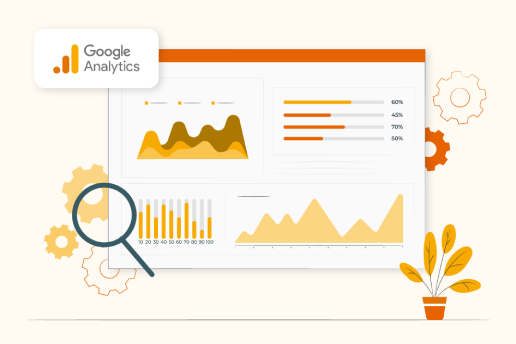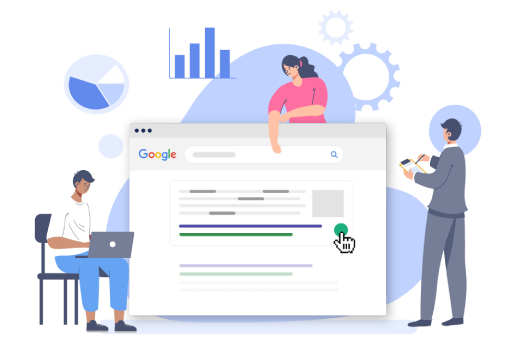SEO marketing has become one of the buzzwords that many website owners and digital marketers seem to be talking about. Many people are trying out this organic marketing strategy to improve their website’s search engine rankings. They want to get their websites to the top of the SERPs, gain more interested visitors, and increase the number of their subscribers or paying customers.
But how would you know if your SEO strategies are working at all?
To check if your SEO efforts are paying off, you need to monitor various performance metrics using online SEO tools.
Now, this leads us to another question – how do these metrics and KPIs can help us determine if the SEO strategy is working? And finally, how long would it take for your site’s ranking to improve?
Well, let’s find out the in the following sections!
Organic Traffic
Whenever someone performs a Google search using a phrase or question, they will often get search results containing relevant ads and web page links. If you implemented your SEO strategy well, one or more of your web pages should show up at the top of the SERPs.
Whenever someone clicks on your web page link available on the Google search results, they go to the particular web page. And these visits to your website’s pages will be counted as organic traffic. Organic traffic is often counted as high-quality leads. After all, these people are looking for a specific answer or solution.
And since your web page showed up in their search results, it means that you are probably providing the solution or answer that they are looking for. These people are highly likely to convert into your customers or subscribers.
These facts make organic traffic a great indicator of your SEO program’s or strategy’s performance. If it works well, your website will rank higher on SERPs for relevant keywords, which will help you get more organic traffic.
You can use online SEO tools or analytics solutions like Google Analytics to track your daily, weekly, and monthly organic traffic.
Keyword Ranking
The keyword is a word, phrase, or sentence that people type in the search box of a search engine to find out answers, products, or services. For example, if you type “Adidas Shoes” in Google and search about it, “Adidas Shoes” would be treated as a keyword. You must optimize your web content and URLs to rank higher in the SERPs for a set of keywords and their long-tail variations.
So, it’s quite simple to check if your SEO effort is working just by using the keywords you are trying to rank your website. Just type one of those keywords in Google and perform a search. Your website or a page of your website should show up on the first page of the search result.
It would be even better if your website’s page appeared at the top of the first page of the search results. After all, according to stats, the first three web pages of the Google search result’s first page get an aggregate CTR of 68.1%.
Thus, don’t forget to check your Google keyword rankings to find out if your SEO program is actually working.
Bounce Rate
The bounce rate indicates the percentage of visitors who left your website just after entering your page from the Google search results without making any further interactions.
According to Google Analytics, if a visitor returns to the Google search result page after visiting your website and doesn’t visit any other page on your website, the visitor will be counted among the bounced audience.
Google says since the visitors don’t find your website content useful for a certain keyword, they don’t visit the second page of your website after entering it. In this case, your web page’s SEO score will decrease if the bounce rate goes beyond a certain threshold.
Therefore, if you see the average bounce rate of your website to be over 65%, your SEO efforts probably aren’t working as you expected them to. You can use free Google SEO tools like Google Analytics to check your website’s average bounce rate.
Domain Authority
You can use your website’s domain authority to predict how your website will rank in the SERPs. Most SEO tools often measure a website’s domain authority on a scale of 1 to 100. Here, the higher the number of domain authorities is, the better the website will rank and the more traffic it will get.
In contrast, a low domain authority usually translates to a lower ranking in SERPs and a decreased number of website visitors. You can use your website’s domain authority score to figure out how it compares with your competitors’ websites. This way, you can create a better SEO strategy to increase your website’s domain authority over time.
You can use free online SEO tools to check the domain authority of your website and the sites of your competitors.
Backlinks
The number and quality of backlinks are one of the biggest aspects Google uses to rank your website. According to a recent case study, the web page ranked at no. 1 in the SERPs has 2.2 times more backlinks than the web page ranked no. 2 in the SERPs. Naturally, the number of backlinks should be one of your high-priority metrics to figure out if your SEO efforts are paying off.
Monitor the number of backlinks on your website and your important web pages. See if the number of backlinks has increased over time. You must also focus on the backlinks that you got because of your own effort and the backlinks your web pages got automatically. Getting more backlinks without putting in extra effort would mean your link-building SEO strategy is finally paying off.
You can use these metrics to modify your link-building strategy and try something else. There are many free SEO checker tools available online that can help you monitor your backlinks with ease.
Page Speed
If your website’s loading speed isn’t fast enough, people are less likely to come back to your website. Undoubtedly, page speed is one of the most important metrics that you should be monitoring, as it directly or indirectly affects many other SEO metrics as well. This is especially true if you’re running an e-commerce site.
According to a study by portent, to ensure the best conversion rate, your website’s loading speed shouldn’t be longer than 2 seconds. That’s because for every extra second after these two seconds, your website’s conversion rate will decrease by an average of 4.42%.
Page speed also affects a website’s bounce rate. Consumers these days want faster actions and solutions. So, if your pages load very slowly, the visitors are more likely to abandon your website and look for some other site to find a solution.
This will increase your bounce rate and decrease your SEO score even if your website provides high-quality content or have an amazing product or service.
You can use free Google SEO tools like Google PageSpeed Insights or other free tools to check your website’s loading speed.

Average Time Spent on a Page
This KPI shows how well your website’s content is aligned with the visitors’ search intents. When a person types a keyphrase in Google to look for an answer, product, and service and he/she clicks on your website a spends a lot of time there, it means that your website satisfies their needs.
Google search algorithms will take the long amount of time visitors spend on your website as a positive indicator. It means that your website or web pages have relevant and high-quality content that matches perfectly with the visitors’ search intent for a particular set of keywords.
As a result, Google will increase the SEO score of your website or web page. With this, your web page will likely rank higher in the SERPs for that particular set of keywords. When it happens, it means that your SEO program is working well.
You can use free Google SEO tools like Google Analytics to monitor the average time spent on a page or your whole website with ease.
Conclusion: How Long Should You Wait to See the Results
Using SEO strategies to increase your website’s SEO score and search engine visibility is like running a 26.2 miles complete marathon, not a 100-meter sprint. In a sense, your SEO campaigns and programs are like a continuous project that will never end. However, if your SEO efforts are the correct ones for your website and they are working well, you should be able to see the results using various metrics after a few months.
Generally, you can expect to see visible results after 4 – 12 months of SEO implementations. But don’t forget that you’re not the only one running this race. Your competitors are also trying to rank their websites for the same or similar keyphrases. So, even if you see your backlink metrics improve by leaps and bounds, your actual search engine visibility and domain authority might still be improving at a snail’s pace.
So, to understand if you’re making any actual progress, you must keep an eye on all the metrics we have mentioned in this article. If you’re running an e-commerce store, you might also want to check additional metrics like conversion rate.
You can track all those performance metrics and KPIs using various online SEO tools. Remember, in SEO marketing, consistency is the most important factor. So, even if your search engine rankings improve at a slow pace, you need to keep going to enjoy incredible results after a few months.









